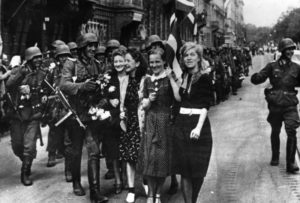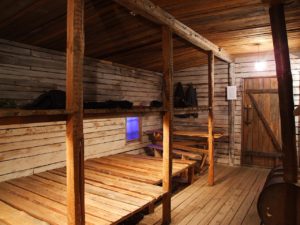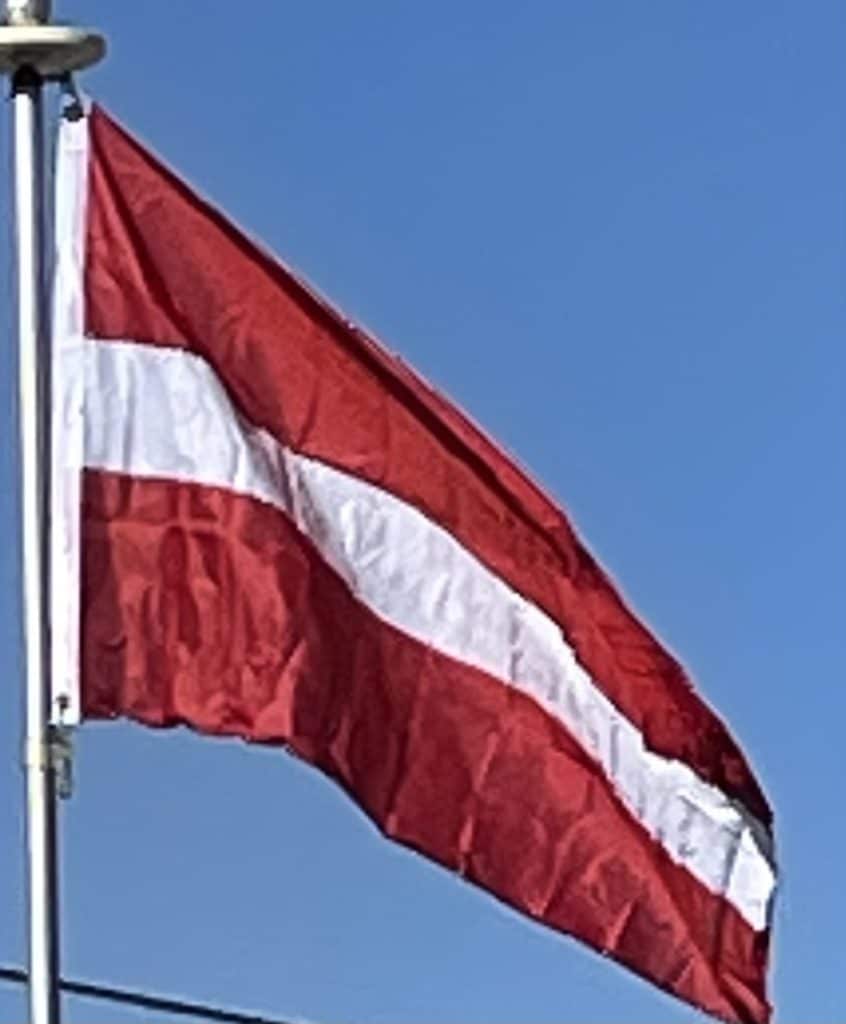Under German occupation, Latvia was administered as part of Reichskommissariat Ostland. Latvian paramilitary and Auxiliary Police units established by the occupation authority participated in the Holocaust and other atrocities. 30,000 Jews were shot in Latvia in the autumn of 1941. Another 30,000 Jews from the Riga ghetto were killed in the Rumbula Forest in November and December 1941, to reduce overpopulation in the ghetto and make room for more Jews being brought in from Germany and the West. There was a pause in fighting, apart from partisan activity, until after the siege of Leningrad ended in January 1944 and the Soviet troops advanced, entering Latvia in July and eventually capturing Riga on 13 October 1944.

More than 200,000 Latvian citizens died during World War II, including approximately 75,000 Latvian Jews murdered during the Nazi occupation. Latvian soldiers fought on both sides of the conflict, mainly on the German side, with 140,000 men in the Latvian Legion of the Waffen-SS. The 308th Latvian Rifle Division was formed by the Red Army in 1944. On occasions, especially in 1944, opposing Latvian troops faced each other in battle.
Soviet Era (1940–1941, 1944–1991):
In 1944, when Soviet military advances reached Latvia, heavy fighting took place in Latvia between German and Soviet troops, which ended in another German defeat. In the course of the war, both occupying forces conscripted Latvians into their armies, in this way increasing the loss of the nation’s “live resources”. In 1944, part of the Latvian territory once more came under Soviet control. The Soviets immediately began to reinstate the Soviet system. After the German surrender, it became clear that Soviet forces were there to stay, and Latvian national partisans, soon joined by some who had collaborated with the Germans, began to fight against the new occupier.
Anywhere from 120,000 to as many as 300,000 Latvians took refuge from the Soviet army by fleeing to Germany and Sweden. Most sources count 200,000 to 250,000 refugees leaving Latvia, with perhaps as many as 80,000 to 100,000 of them recaptured by the Soviets or, during few months immediately after the end of war, returned by the West. The Soviets reoccupied the country in 1944–1945, and further deportations followed as the country was collectivized and Sovieticized.
On 25 March 1949, 43,000 rural residents (“kulaks“) and Latvian nationalists were deported to Siberia in a sweeping Operation Priboi in all three Baltic states, which was carefully planned and approved in Moscow already on 29 January 1949. This operation had the desired effect of reducing the anti Soviet partisan activity. Between 136,000 and 190,000 Latvians, depending on the sources, were imprisoned or deported to Soviet concentration camps (the Gulag) in the post war years, from 1945 to 1952. Some managed to escape arrest and joined the partisans.

In the post-war period, Latvia was made to adopt Soviet farming methods. Rural areas were forced into collectivization. An extensive program to impose bilingualism was initiated in Latvia, limiting the use of Latvian language in official uses in favor of using Russian as the main language. All of the minority schools (Jewish, Polish, Belarusian, Estonian, Lithuanian) were closed down leaving only two media of instructions in the schools: Latvian and Russian. An influx of new colonists, including laborers, administrators, military personnel and their dependents from Russia and other Soviet republics started. By 1959 about 400,000 Russian settlers arrived and the ethnic Latvian population had fallen to 62%.
